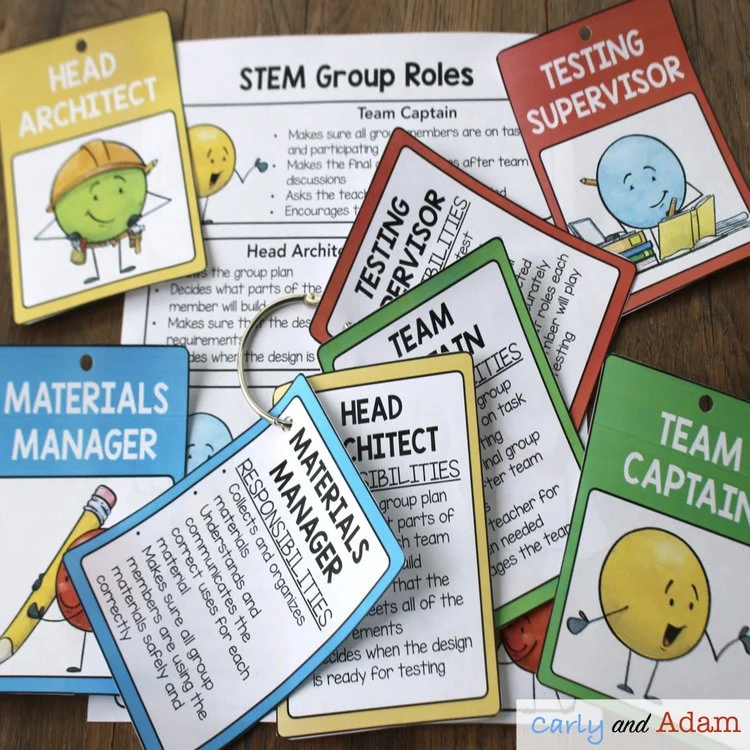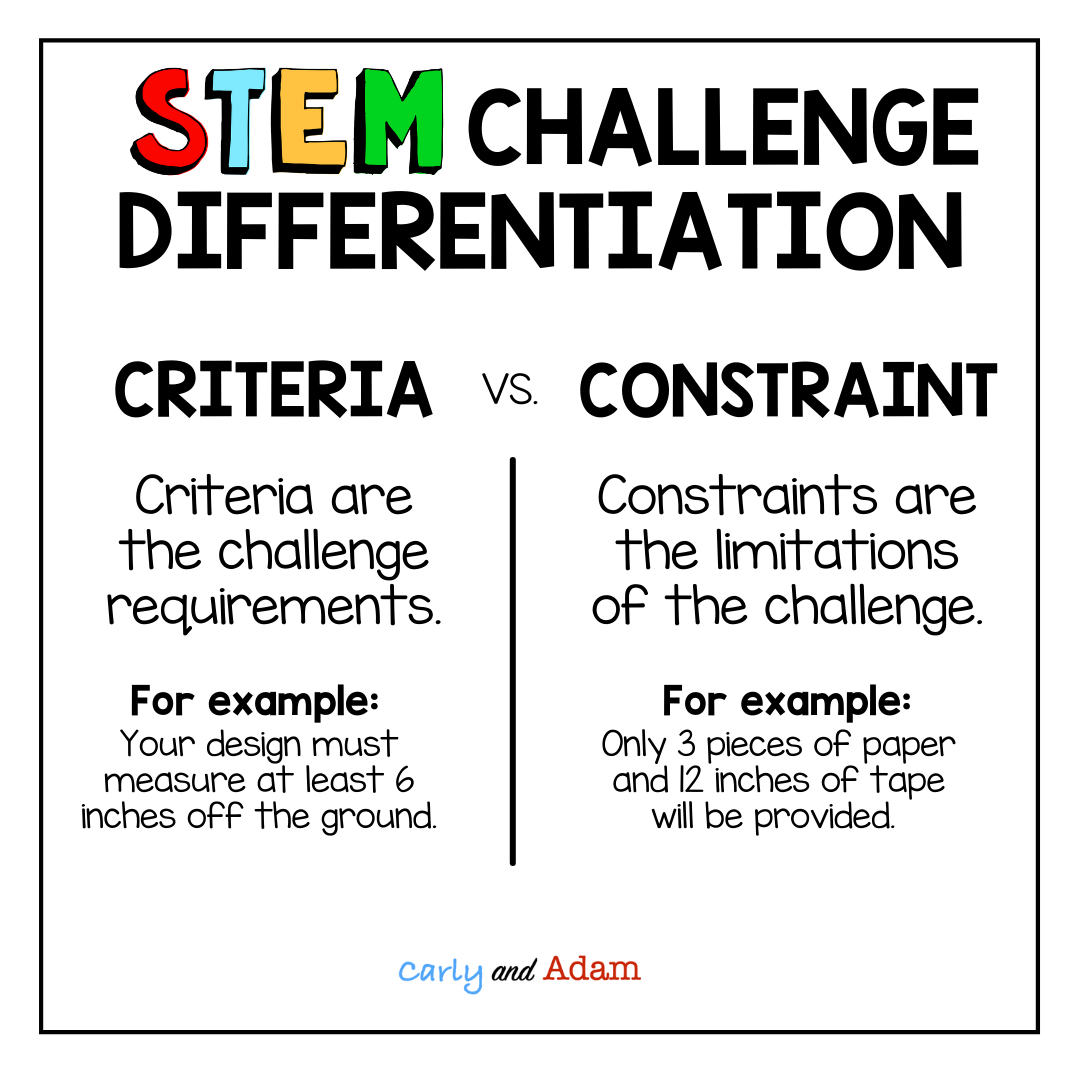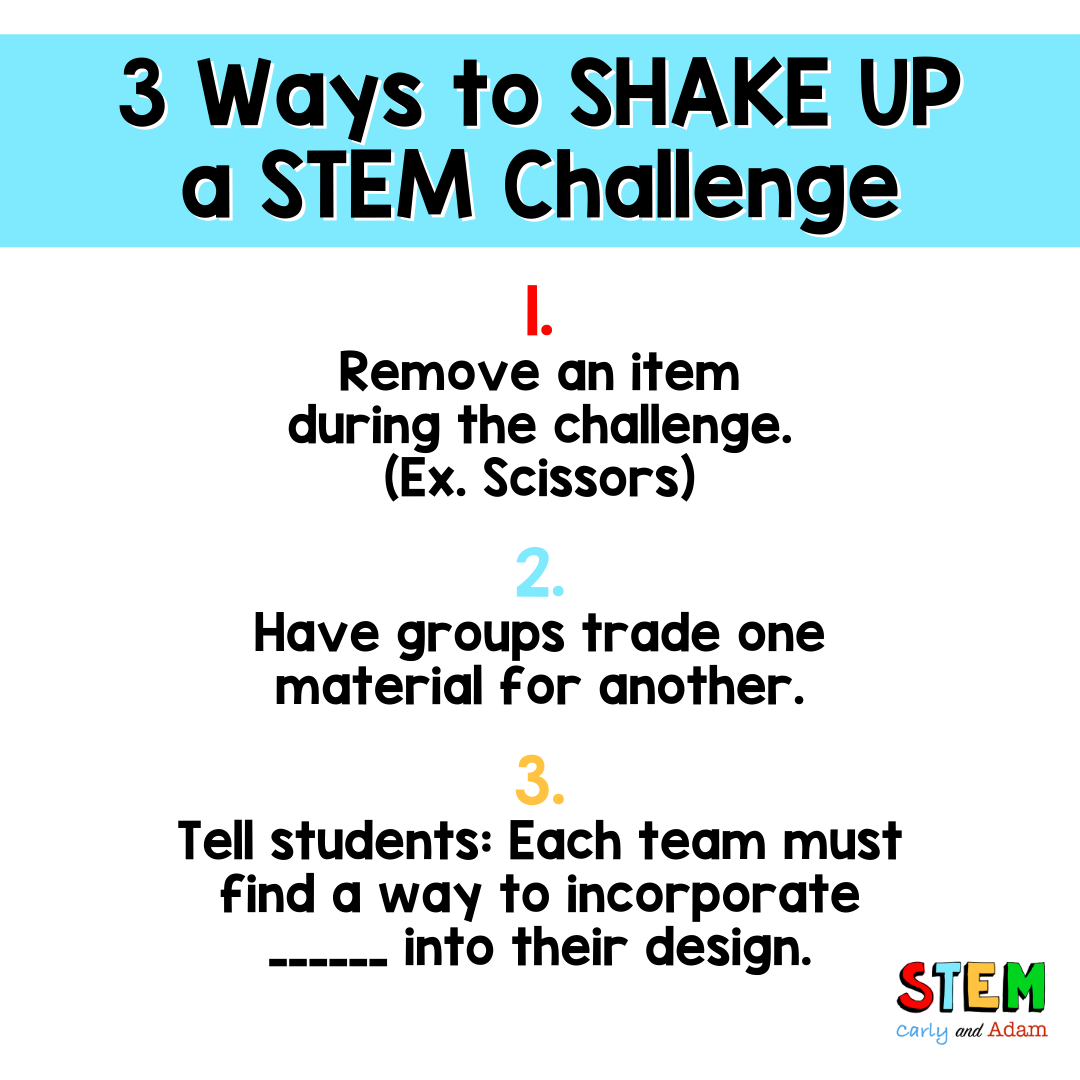4 Ways to Differentiate a STEM Challenge
The following is a guest post from Dr. Jacie Maslyk.
STEM challenges aren’t meant to be “one size fits all.” There are different takes on challenges which can include new and different variations. Whether you are looking for a new challenge to try or need a few ways to differentiate a challenge that you are planning to do, this post will share four strategies to help you along the way!
Perhaps you’ve found a STEM challenge, but you think it may be too easy for your students. Or maybe you did a similar challenge last year and are looking for a way to spice things up.
There are many ways we can differentiate our STEM challenges that will deepen student understanding, push them to think flexibly and allow them to tap into their creativity, and problem-solving skills.
4 Ways to Differentiate a STEM Challenge:
1.) Adjust Group Dynamics
2.) Adjust the Parameters
3.) Include a Time Factor
4.) Shake Things Up!
Differentiation Strategies
Just as every STEM challenge isn’t for everyone, every differentiation strategy isn’t either. You will find some strategies that you like better than others. Try a few and find the one that works best for you. Just like our students, we may need to take a differentiated approach to our lesson design.
Whether we rethink our challenge criteria or consider adding some limitations into the lesson, differentiation doesn’t have to take a lot of time and effort on your part.
Embedding time limits or changing lesson materials might be a way to differentiate an existing lesson. Other times, we may need to completely shake things up and alter the challenge in a way that no one anticipated.
Let’s take a look at a few ideas:
1. Group Dynamics
Assigning roles within a STEM challenge is one management technique that you can use in the classroom.
Consider how the group dynamics may change when you assign a quiet student as the group leader or the big idea person as the record keeper. How might you use group dynamics to differentiate your STEM lesson?
When I walk by your group, I’m going to tap one student on the shoulder. Now, everyone who was tapped must step away from the group and move to a new group.
For this challenge, only the group leader can talk and everyone else needs to be silent.
The only person who can get materials for this challenge is the “materials manager” and everyone else will need to communicate their material needs through them.
2. Adjusting Parameters
Establishing criteria and adding constraints are ways that we can adjust the parameters of our STEM challenges.
What is the difference between criteria and constraints?
Criteria are the challenge requirements. Setting criteria before the lesson starts establishes expectations for the challenge. Criteria can include the physical space in which students are working.
Examples of Criteria:
Your design must measure at least 6 inches off the ground.
All of the components of your design must fit on the top of your desk.
Criteria can also be the goal of the overall challenge. (Ex. Teams will design a way for the boy to get his kite out of the tree.)
We can add restrictions or limitations within a challenge to create an added layer of difficulty. This will force students to respond to the constraint and rethink their solution.
Constraints are the limitations of the challenge. We can incorporate constraints through the use of materials. For example, you may only use cardboard and tape for this challenge, OR only 3 pieces of paper and 12 inches of tape will be provided.
A time limit is another example of a constraint.
3. Time Factor
We can use time as a way to differentiate our challenges. Setting a timer might help students to manage their time in a challenge, but it might also cause anxiety in other students. Think about the ways that you can differentiate using time.
Do you give students a set amount of time to plan (5 minutes), build (20 minutes), test (5 minutes), and refine their design (10 minutes)?
Does the challenge have to be completed within one class period?
Here are some other ways that time can be a factor in a STEM challenge.
How long will your paper tower stand before falling down? Which team will get theirs to stand the longest period of time?
Every 10 seconds you will need to add another weight to your straw bridge. The winning team will be the bridge that holds the most weight.
Create a top that will spin longer than 1 minute.
4. Shake Things Up
One way you can be sure to keep students on their toes is to shake up the challenge midstream. Think about all those popular baking competitions. The bakers are moving right along with their challenge when all of a sudden, there’s a twist and they now have to incorporate raspberries into their existing cake. It’s enough to throw off even the most skilled baker.
Twists like this can push students’ thinking and force them to consider new ideas within STEM challenges, as well. Consider these ways to shake things up:
In 2 minutes, I’m going to come around and take away your scissors. Think about what else you might use to accomplish your task.
Choose one material that your team is currently using and trade it for a material that another team is using. Every team must trade one item.
Each team must find a way to incorporate __________ into their design. Fill in the blank. This might mean adding a moving part or a feature that lights up.
If we are designing instruction for our own students, then every STEM challenge will be slightly different. We can add components of differentiation to challenge our students even further and meet their needs as designers, scientists, and engineers.
For more STEM ideas, inspiration, and collaboration with other STEM teachers be sure to join our FREE Facebook group Elementary STEM Teachers with Carly and Adam!
We hope you have found this blog post helpful. To stay connected with Carly and Adam's teaching tips and classroom freebies be sure to follow us on Facebook, Pinterest, Teachers Pay Teachers, and subscribe to our blog!
An educator for the last 23 years, Dr. Jacie Maslyk, has served as a classroom teacher, reading specialist, elementary principal, and assistant superintendent. She is the author of STEAM Makers: Fostering Creativity and Innovation in the Elementary Classroom, Connect to Lead: Power Up Your Learning Network to Move Your School Forward (ISTE), Remaking Literacy: Innovative Instructional Strategies for Maker Learning and Unlock Creativity: Opening a World of Imagination With Your Students. You can read more on her blog, Creativity in the Making, at www.jaciemaslyk.blogspot.com. Connect with Jacie on Twitter @DrJacieMaslyk or email her at jaciemaslyk@gmail.com .








